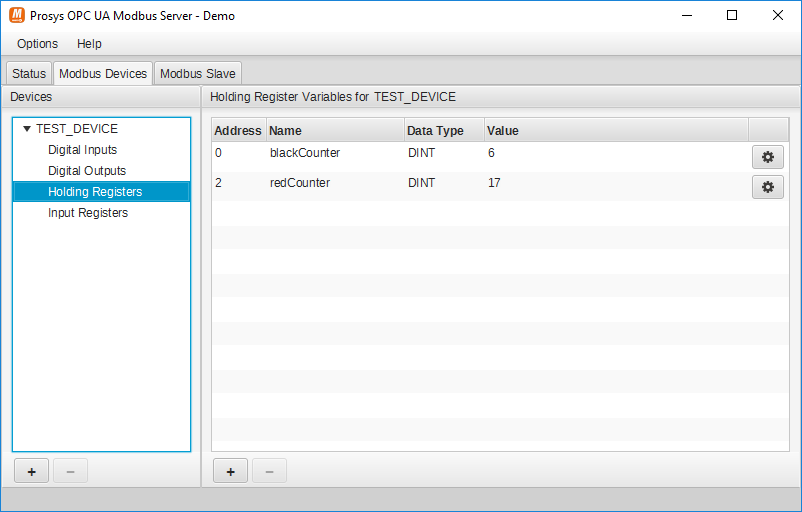


- #MODBUS SERVER SIMULATOR FOR WINDOWS SOFTWARE#
- #MODBUS SERVER SIMULATOR FOR WINDOWS CODE#
- #MODBUS SERVER SIMULATOR FOR WINDOWS DOWNLOAD#
ScadaBR is a project that started in 2006 and has been working on an open source free software platform that communicates with Modbus TCP devices and allows users to create customizable HMI screens for Automation, Data Acquisition, and Supervisory Control applications.
#MODBUS SERVER SIMULATOR FOR WINDOWS DOWNLOAD#
Essentially, go to their downloads page, download the appropriate client application, and instruct it to connect to their demo server "pv://:5050. There is a great introductory example on their examples page. Both the client and server portions can be run on multiple operating systems: Windows, Linux, macOS, and others ( downloads page). pvbrowser at its core is a client-server uses QT at its core to enable users to create customized SCADA system servers (install the PV development package) that can connect to multiple Modbus TCP slave devices, collect data, and then report data using their pvbrowser (client) application. The project started in 2000 and is a fairly mature project that enables users to create client-server architectured open source SCADA systems and HMIs.
#MODBUS SERVER SIMULATOR FOR WINDOWS CODE#
Pvbrowser is an open source HMI/SCADA/DCS project whose code is available on GitHub. The other applications can also be used to utilize LabJack devices. The HMI builder (ScadaBR) portion of the project can be used to directly interface with LabJack T-Series devices. It has been put together by a PhD student Thiago Rodrigues Alves and according to his website consists of three parts: Runtime, Editor, and HMI builder. Open PLC is an open source PLC software suite that has been built to function on an industrial and home automation level. Other T-series software options include the free LabJack applications and libraries. This section has a dynamic map that allows you to filter and search. The Modbus Map defines the address and name of all registers, along with other information. This will help in trying to debug any configuration issues with addressing or bit-wise (byte-flipping) and proves that communication has been successfully set up before trying to read data from other registers. The T7 and T4 have five test registers that should be used before trying to read/write to other registers. Additional support for any particular 3rd-party Modbus client can be found in forums for the Modbus client. The number of applications that exist is fairly large so we have not tested all of them. The following is a long list of client applications that we have found that claim to support Modbus TCP communication. LabJacks with Modbus support follow the standard, so any Modbus TCP Client should be able to talk to our devices. Because of this they are compatible with dozens of 3rd-party Modbus client applications. Once the connection is active, create a new query window.LabJack T-Series devices are Modbus TCP Server devices. Once you have entered the IP address, connect to the inverter by clicking “Connect.”

Open the tool and choose Connection/Settings or click the icon in the toolbar.Įnter the IP address of the inverter that you want to query. This is the same address where you access the inverter in a web browser or in Sunny Explorer. Set the network addressįirst, you have to find your inverter’s network IP address.


 0 kommentar(er)
0 kommentar(er)
